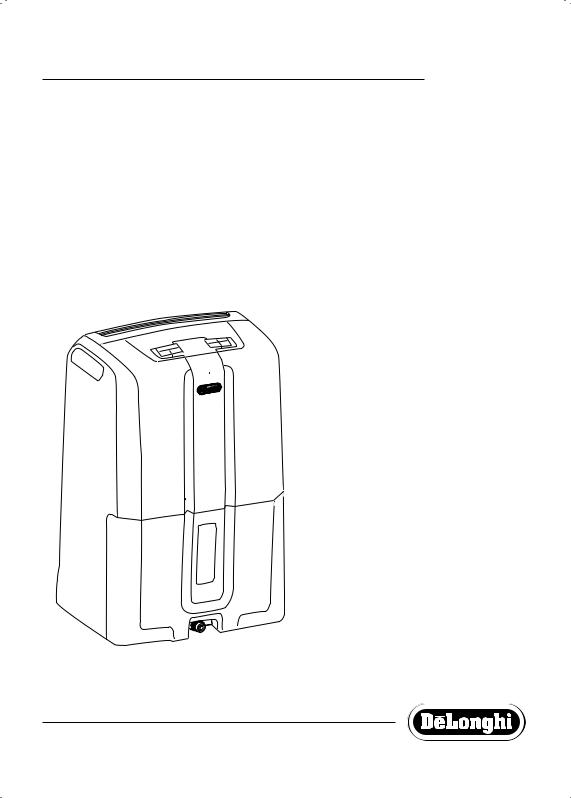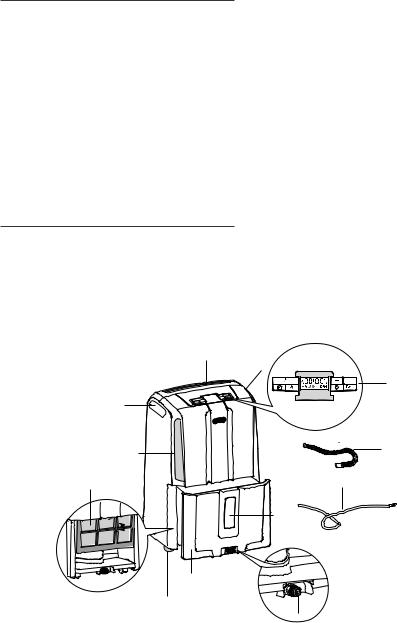Delonghi DDX45E, DDX45PE Instruction manuals

<![endif]>5714810971_00_0417
De’Longhi Appliances via Seitz, 47 31100 Treviso Italia www.delonghi.com
1

DDX Series
DEHUMIDIFIER
Instructions for use. Keep these instructions Visit www.delonghi.com for a list of service centers near you. ELECTRIC CHARACTERISTICS 120 V~ 60 Hz
DÉSHUMIDIFICATEUR
Mode d’emploi . Conservez cette notice Visitez www.delonghi.com pour y voir une liste des centres de réparation proches de chez vous. CARACTÉRISTIQUES ÉLECTRIQUES 120 V~ 60 Hz
DESHUMIDIFICADOR
Repase y guarde estas instrucciones. Lea cuidadosamente este instructivo antes de usar su aparato.
Visite www.delonghi.com para ver la lista de centros de servicios cercanos a usted.
CARACTERISTICAS ELECTRICAS: 120 V~ 60 Hz

SOME NOTIONS ON
HUMIDITY
Air always contains a certain amount of water in the form of vapour. This determines the level of humidity in an atmosphere.
The capacity of the air to hold water vapour increases with temperature.
This is why in our homes, as soon as the temperature decreases, the vapour contained in the air condenses, as is evident on the colder surfaces in the room, such as the windows, walls etc. The purpose of a dehumidifier is to remove the excess moisture from the air, avoiding the damage caused by condensation.
Experts have established that the optimum environmental conditions for our well being and for the home are obtained between 40% and 60% relative humidity. Lower relative humidity can be achieved with higher room temperatures. For lower room temperatures the achievable relative humidity will be on the higher side, closer to 60%. Therefore, with lower room temperatures, you are recommended to heat the room even minimally.
This considerably increases the dehumidifying power of the appliance.
With heating, the condensation formed by the water vapour on windows and other cold surfaces evaporates into the air to be collected by the dehumidifier.
DESCRIPTION/ACCESSORIES
1. |
Control panel |
7. |
Air outlet grille |
2. |
Water level viewing window |
8. |
Drain hose to be used at the back of the unit |
3. |
Condensate collection tank |
9. |
Pump tube to be used at the front of the unit |
4. |
Handles |
10. Connector for PUMP draining (first remove |
|
5. |
Air intake grille |
|
stopper; only on pump models) |
6. |
Dust filter |
11. Wheels |
|
|
|
7 |
|
|
|
4 |
|
|
|
|
1 |
|
4 |
|
|
|
5 |
|
8 |
|
|
|
|
|
6 |
|
9 |
|
|
2 |
|
3
11
10
2
